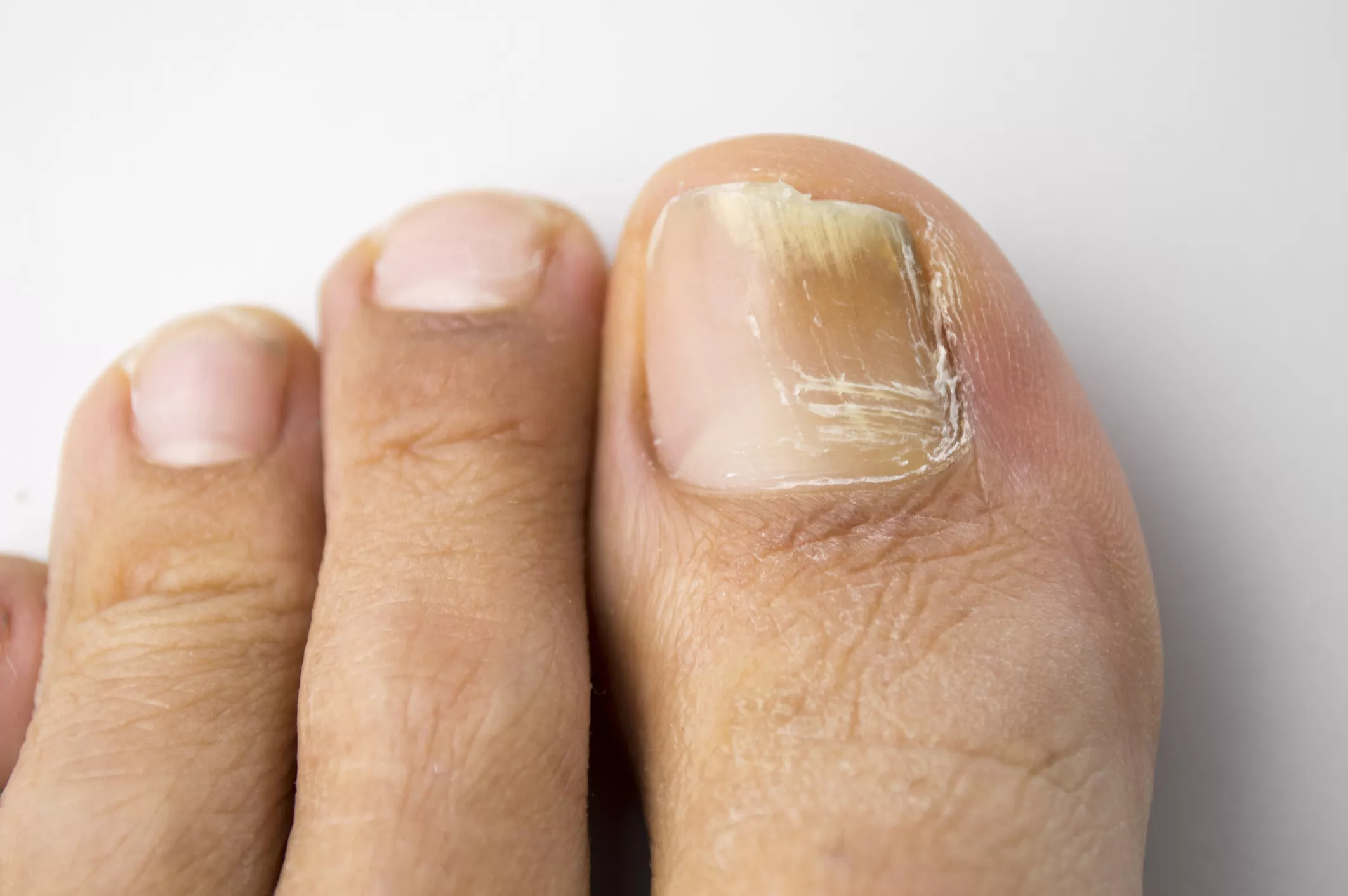Nail Anatomy
The nail, also called the nail plate, is tightly bound to the underlying nail bed, which is the skin-colored area under the nail plate. The white half-moon shape at the base of the nail is known as the lunula. The lunula marks the area where the nail’s matrix begins. The nail matrix is where the growth of the nail occurs. Any damage to the nail matrix, whether it’s trauma or infection, can cause a nail to separate from the nail bed and become loose.
Common Causes of Nail Loosening
The most common causes of nail loosening, known medically as onycholysis, are infection and trauma.
Nail Fungus and Loose Nails
Nail infections are most often caused by a nail fungus and are known as onychomycosis. Onychomycosis is a common toenail infection but can also occur in fingernails, especially in people who work in occupations where their hands are overly exposed to water.1

Onychomycosis is slow-growing and can affect the nail in different ways, but the most common features are nail thickening, nail discoloration, debris under the nail, and nail loosening. The area where the nail comes loose will often have a white appearance where it has separated from the underlying nail bed. Some fungal and bacterial nail infections produce a dark brown or greenish discoloration and may also cause nail loosening. Nail fungus is very stubborn and typically requires podiatrist treatment, which can include laser nail fungus treatment or oral anti-fungal medication.
Trauma and Loose Nails
The other common cause of nail loosening is trauma. One common scenario is an object dropped on the tip of the toe or finger. Sometimes blunt-force trauma to a nail causes excessive bleeding beneath the nail that causes enough pressure to loosen the nail—in some cases causing complete loss of the nail shortly after. Because the bone at the tip of the toe or finger, known as the distal phalanx, is very close in proximity to the nail, blunt toe or finger trauma can sometimes cause a bone fracture2.
It is best to seek medical care for nail trauma, especially if there is bleeding beneath the nail.
Shoewear and Loose Toenails
Another common scenario that causes a toenail to come loose is repeated trauma from shoe wear. This is often associated with running, extended periods of walking or hiking, or any endurance sport and is sometimes referred to as black toenail. In any case of trauma to a nail, the blood that builds up beneath the nail causes a red, purple, or black discoloration and is known as a subungual hematoma. Quite often, you will lose the nail as it grows out.
Repeated long-term rubbing of the toe against the tip of the shoe may result in the nail edge coming loose without any bleeding beneath the nail.
Other Causes of a Loose Nail
- Allergic reaction to manicure/pedicure products
- Psoriasis
- Photosensitizing reaction to a medication
- Hyperthyroidism
- Anemia
Treatment
Seeing a podiatrist, dermatologist, or another medical provider for a loose toenail may involve diagnostic testing where appropriate, such as laboratory testing. The most common cause of a loose toenail is onychomycosis and treatment may entail debriding, or cutting away loose portions of the nail, and possibly anti-fungal medications. Laser treatments have proven to be very effective in treating fungal nails.
Bacterial infections are usually more severe and progress more quickly than fungal infections.
Regardless of the cause of nail loosening, it’s best to seek medical care to decrease the chance of complications related to a bacterial infection.
Will the Nail Grow Back?
A common question people have when they lose a nail, or part of it, is: “Will the new nail grow back normal?” Any time the nail’s matrix (growth center) is injured, whether it’s by trauma or inflammation due to infection, permanent changes to nail growth usually occur. The changes can be as subtle as a bumpy texture or thickening of the nail.

